
Winslow Homer Painting Reproductions 1 of 4
1836-1910
American Realist Painter
Born in Boston on February 24, 1836, Winslow Homer grew up in a New England household defined by contrasts - a mother of quiet artistic inclination and a father of entrepreneurial volatility. His mother, Henrietta Maria Benson Homer, a capable amateur watercolorist, offered encouragement and a model of disciplined independence; his father, Charles Savage Homer, pursued speculative ventures that often removed him physically and emotionally from the family. The young Homer absorbed both the calm persistence of the one and the restless self-reliance of the other, dispositions that would later shape his professional choices and the reticent solitude of his maturity.
Homer’s training began not in a formal academy but at a lithographic stone in Boston. At nineteen he entered an apprenticeship with J. H. Bufford, producing commercial sheets and song-book covers. He later described the two years as a treadmill - technically instructive yet creatively confining. When he left to freelance in 1857, refusing a staff position at Harper’s Weekly, he declared a lifelong independence: no master, no school. The decision reflects both pride and prudence; illustration was a fast-expanding market in the 1850s, and Homer’s clean line, bold contrast, and sure sense of pictorial grouping transferred readily to wood engraving. His early Boston and rural New England scenes already carried the clarity and economy that would persist through his oils and watercolors.
In 1859, Homer moved to New York and opened a studio in the Tenth Street Studio Building, then the crucible of American artistic ambition. He took a few classes at the National Academy of Design and briefly worked with Frederick Rondel, but his growth was largely autodidactic. The Civil War intervened, and Harper’s sent him to the front. He witnessed encampments and combat from a close vantage point, turning sketches into engraved illustrations for a broad public hungry for images. Those field drawings - campfire interludes, sharpshooters in trees, soldiers idling or suddenly alert - extended his range from anecdote to drama. Back in the studio, he converted this material into oil paintings such as Sharpshooter on Picket Duty (1862), Home, Sweet Home (1863), and Prisoners from the Front (1866). Their reception at the National Academy consolidated his standing, and in 1865 he was elected a full Academician.
The postwar decade found Homer attentive to scenes of childhood, leisure, and rural work - a pictorial echo of national yearning for stability. Children play games in Snap the Whip (1872) or stand in quiet concentration in Country School (1871); young women gather on lawns or piers, their quietude an implied contrast to recent turbulence. Yet he also probed the uneasy aftermath of emancipation. A Visit from the Old Mistress (1876) stages a measured encounter between emancipated Black women and a former owner, the compositional balance hinting at a hoped-for social equilibrium that history would complicate. These paintings, for all their surface poise, suggest Homer's sensitivity to shifts in American life rather than an acquiescence to decorative pastoralism.
A pivotal year abroad came in 1867 when Homer traveled to Paris, remaining for about a year. He did not enroll in studios or align himself with avant-garde groups; he painted small canvases of peasant life and continued assignments for Harper’s. The French sojourn clarified rather than altered his approach. If the Barbizon painters and Millet offered congenial models of rural subject matter, Homer remained committed to an American vocabulary - outdoor light, economy of means, and directness of tone. He cultivated an independence of method and subject, resisting the temptations of fashionable schools while absorbing the discipline of plein-air practice.
Watercolor, adopted with consistency from 1873 in Gloucester, Massachusetts, became both a practical and expressive complement to his oils. Critics at first saw awkwardness - one dismissed his efforts as if a child had overturned an ink bottle - but the market proved more receptive. Watercolors sold when oils sometimes lingered, easing financial pressure. More importantly, the medium suited Homer’s itinerant working rhythm. He traveled with materials at hand, recording scenes simultaneously as finished works and as studies for larger compositions. The range is broad: from tightly observed classroom scenes such as Blackboard (1877) to loose maritime studies like Schooner at Sunset (1880).
Increasingly withdrawn from urban sociability, Homer sought maritime settings that matched his temperament. Gloucester, then the rugged coast of Maine, offered both frontline observation and solitude. A crucial interlude came not in America but in Cullercoats, Northumberland, where he lived from 1881 to 1882. There he watched women and men labor under indifferent North Sea weather, producing watercolors of a restrained palette and firm structure. The women - fishermen’s wives, net-menders - are rendered as sturdy presences, neither sentimentalized nor reduced to ornament. The emotional register darkened and deepened; the subjects became less anecdotal and more emblematic of endurance.
Returning to the United States, Homer settled at Prouts Neck, Maine, in 1883, converting a carriage house within earshot of pounding surf. The great sea pictures of the mid-1880s - Undertow (1886), Eight Bells (1886), The Fog Warning (1885) - transform witnessed incident into archetype. Human figures confront the sea’s power with competence, fear, or resignation, but never melodramatic despair. The compositions are spare, the paint handling authoritative, the emotional tenor restrained. The market, however, lagged behind critical admiration; Homer’s austere vision did not invite easy domestic placement, and prices were modest. He lived carefully, buoyed occasionally by family support.
To counter the severity of the North Atlantic, Homer wintered in Florida, the Bahamas, and Cuba in the mid 1880s and again in the 1890s. There he made luminous watercolors of tropical flora, calm seas, and Black inhabitants whose daily labors and leisure he observed without condescension. Works such as A Garden in Nassau (1885) or The Gulf Stream (1899, in oil) demonstrate a widened chromatic register and underscore his engagement with the precarious edge between human agency and natural threat. In The Gulf Stream, a small boat drifts, sharks circle, a storm looms - yet the tone is one of stoic containment, not theatrical crisis.
By the 1890s, with The Fox Hunt (1893) and Huntsman and Dogs (1891), Homer turned to what contemporaries called Darwinian themes - predator and prey, survival driven by instinct and circumstance. The Fox Hunt, immediately acquired by the Pennsylvania Academy of the Fine Arts, shows crows descending upon a fox hampered by deep snow, an image of competing hungers. These works, stripped of anecdote, align with broader late nineteenth-century American concerns about nature, industry, and individual resilience.
Homer’s last decade brought financial security and a paring down of subject. He continued to travel to Canada and revisit the Caribbean, but many late canvases exclude figures, letting waves, rocks, and light alone bear the burden of meaning. Right and Left (1909) shows two ducks at the instant of a hunter’s shot, a moment of suspended finality. He advised an anxious student in 1907 to keep rocks for old age - they were easy - yet the complexity of his late seascapes contradicts that modesty. They are meditations on force and transience, framed with unsentimental precision.
Homer died on September 29, 1910, in his Prouts Neck studio. He left an unfinished painting, Shooting the Rapids, Saguenay River - an apt coda for an artist who resisted closure and explanation. He taught no formal classes, sought no disciples, yet artists from Howard Pyle to the Wyeths felt the gravitational pull of his integrity. Later honors - commemorative stamps, museum retrospectives, a National Historic Landmark designation for his studio - attest not to fashion but to the durable clarity of his achievement. He asked artists to look at nature and solve their own problems. He did so, rigorously, for half a century.
Homer’s training began not in a formal academy but at a lithographic stone in Boston. At nineteen he entered an apprenticeship with J. H. Bufford, producing commercial sheets and song-book covers. He later described the two years as a treadmill - technically instructive yet creatively confining. When he left to freelance in 1857, refusing a staff position at Harper’s Weekly, he declared a lifelong independence: no master, no school. The decision reflects both pride and prudence; illustration was a fast-expanding market in the 1850s, and Homer’s clean line, bold contrast, and sure sense of pictorial grouping transferred readily to wood engraving. His early Boston and rural New England scenes already carried the clarity and economy that would persist through his oils and watercolors.
In 1859, Homer moved to New York and opened a studio in the Tenth Street Studio Building, then the crucible of American artistic ambition. He took a few classes at the National Academy of Design and briefly worked with Frederick Rondel, but his growth was largely autodidactic. The Civil War intervened, and Harper’s sent him to the front. He witnessed encampments and combat from a close vantage point, turning sketches into engraved illustrations for a broad public hungry for images. Those field drawings - campfire interludes, sharpshooters in trees, soldiers idling or suddenly alert - extended his range from anecdote to drama. Back in the studio, he converted this material into oil paintings such as Sharpshooter on Picket Duty (1862), Home, Sweet Home (1863), and Prisoners from the Front (1866). Their reception at the National Academy consolidated his standing, and in 1865 he was elected a full Academician.
The postwar decade found Homer attentive to scenes of childhood, leisure, and rural work - a pictorial echo of national yearning for stability. Children play games in Snap the Whip (1872) or stand in quiet concentration in Country School (1871); young women gather on lawns or piers, their quietude an implied contrast to recent turbulence. Yet he also probed the uneasy aftermath of emancipation. A Visit from the Old Mistress (1876) stages a measured encounter between emancipated Black women and a former owner, the compositional balance hinting at a hoped-for social equilibrium that history would complicate. These paintings, for all their surface poise, suggest Homer's sensitivity to shifts in American life rather than an acquiescence to decorative pastoralism.
A pivotal year abroad came in 1867 when Homer traveled to Paris, remaining for about a year. He did not enroll in studios or align himself with avant-garde groups; he painted small canvases of peasant life and continued assignments for Harper’s. The French sojourn clarified rather than altered his approach. If the Barbizon painters and Millet offered congenial models of rural subject matter, Homer remained committed to an American vocabulary - outdoor light, economy of means, and directness of tone. He cultivated an independence of method and subject, resisting the temptations of fashionable schools while absorbing the discipline of plein-air practice.
Watercolor, adopted with consistency from 1873 in Gloucester, Massachusetts, became both a practical and expressive complement to his oils. Critics at first saw awkwardness - one dismissed his efforts as if a child had overturned an ink bottle - but the market proved more receptive. Watercolors sold when oils sometimes lingered, easing financial pressure. More importantly, the medium suited Homer’s itinerant working rhythm. He traveled with materials at hand, recording scenes simultaneously as finished works and as studies for larger compositions. The range is broad: from tightly observed classroom scenes such as Blackboard (1877) to loose maritime studies like Schooner at Sunset (1880).
Increasingly withdrawn from urban sociability, Homer sought maritime settings that matched his temperament. Gloucester, then the rugged coast of Maine, offered both frontline observation and solitude. A crucial interlude came not in America but in Cullercoats, Northumberland, where he lived from 1881 to 1882. There he watched women and men labor under indifferent North Sea weather, producing watercolors of a restrained palette and firm structure. The women - fishermen’s wives, net-menders - are rendered as sturdy presences, neither sentimentalized nor reduced to ornament. The emotional register darkened and deepened; the subjects became less anecdotal and more emblematic of endurance.
Returning to the United States, Homer settled at Prouts Neck, Maine, in 1883, converting a carriage house within earshot of pounding surf. The great sea pictures of the mid-1880s - Undertow (1886), Eight Bells (1886), The Fog Warning (1885) - transform witnessed incident into archetype. Human figures confront the sea’s power with competence, fear, or resignation, but never melodramatic despair. The compositions are spare, the paint handling authoritative, the emotional tenor restrained. The market, however, lagged behind critical admiration; Homer’s austere vision did not invite easy domestic placement, and prices were modest. He lived carefully, buoyed occasionally by family support.
To counter the severity of the North Atlantic, Homer wintered in Florida, the Bahamas, and Cuba in the mid 1880s and again in the 1890s. There he made luminous watercolors of tropical flora, calm seas, and Black inhabitants whose daily labors and leisure he observed without condescension. Works such as A Garden in Nassau (1885) or The Gulf Stream (1899, in oil) demonstrate a widened chromatic register and underscore his engagement with the precarious edge between human agency and natural threat. In The Gulf Stream, a small boat drifts, sharks circle, a storm looms - yet the tone is one of stoic containment, not theatrical crisis.
By the 1890s, with The Fox Hunt (1893) and Huntsman and Dogs (1891), Homer turned to what contemporaries called Darwinian themes - predator and prey, survival driven by instinct and circumstance. The Fox Hunt, immediately acquired by the Pennsylvania Academy of the Fine Arts, shows crows descending upon a fox hampered by deep snow, an image of competing hungers. These works, stripped of anecdote, align with broader late nineteenth-century American concerns about nature, industry, and individual resilience.
Homer’s last decade brought financial security and a paring down of subject. He continued to travel to Canada and revisit the Caribbean, but many late canvases exclude figures, letting waves, rocks, and light alone bear the burden of meaning. Right and Left (1909) shows two ducks at the instant of a hunter’s shot, a moment of suspended finality. He advised an anxious student in 1907 to keep rocks for old age - they were easy - yet the complexity of his late seascapes contradicts that modesty. They are meditations on force and transience, framed with unsentimental precision.
Homer died on September 29, 1910, in his Prouts Neck studio. He left an unfinished painting, Shooting the Rapids, Saguenay River - an apt coda for an artist who resisted closure and explanation. He taught no formal classes, sought no disciples, yet artists from Howard Pyle to the Wyeths felt the gravitational pull of his integrity. Later honors - commemorative stamps, museum retrospectives, a National Historic Landmark designation for his studio - attest not to fashion but to the durable clarity of his achievement. He asked artists to look at nature and solve their own problems. He did so, rigorously, for half a century.
94 Winslow Homer Paintings
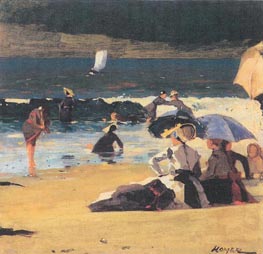
By the Shore c.1870
Oil Painting
$743
$743
SKU: HOM-3852
Winslow Homer
Original Size: unknown
Private Collection
Winslow Homer
Original Size: unknown
Private Collection
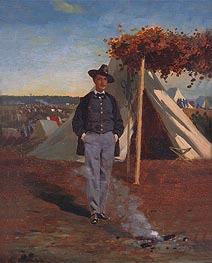
Portrait of Albert Post 1866
Oil Painting
$807
$807
Canvas Print
$62.11
$62.11
SKU: HOM-5561
Winslow Homer
Original Size: 31.8 x 26.7 cm
Fine Arts Museums of San Francisco, California, USA
Winslow Homer
Original Size: 31.8 x 26.7 cm
Fine Arts Museums of San Francisco, California, USA
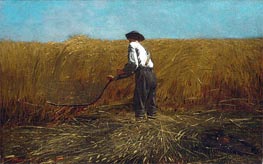
The Veteran in a New Field 1865
Oil Painting
$1126
$1126
Canvas Print
$62.11
$62.11
SKU: HOM-5562
Winslow Homer
Original Size: 61.3 x 96.8 cm
Metropolitan Museum of Art, New York, USA
Winslow Homer
Original Size: 61.3 x 96.8 cm
Metropolitan Museum of Art, New York, USA
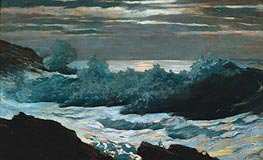
Early Morning after Storm at Sea 1902
Oil Painting
$1102
$1102
Canvas Print
$62.11
$62.11
SKU: HOM-5568
Winslow Homer
Original Size: 76.8 x 127 cm
Cleveland Museum of Art, Ohio, USA
Winslow Homer
Original Size: 76.8 x 127 cm
Cleveland Museum of Art, Ohio, USA

The Gulf Stream 1899
Oil Painting
$1207
$1207
Canvas Print
$62.11
$62.11
SKU: HOM-5569
Winslow Homer
Original Size: 71.4 x 124.8 cm
Metropolitan Museum of Art, New York, USA
Winslow Homer
Original Size: 71.4 x 124.8 cm
Metropolitan Museum of Art, New York, USA
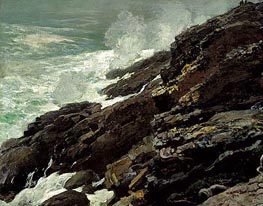
High Cliff, Coast of Maine 1894
Oil Painting
$1126
$1126
Canvas Print
$73.60
$73.60
SKU: HOM-5570
Winslow Homer
Original Size: 76.5 x 97 cm
Smithsonian American Art Museum, Washington, USA
Winslow Homer
Original Size: 76.5 x 97 cm
Smithsonian American Art Museum, Washington, USA

The Fog Warning 1885
Oil Painting
$1194
$1194
Canvas Print
$62.11
$62.11
SKU: HOM-5571
Winslow Homer
Original Size: 76.8 x 123.2 cm
Boston Museum of Fine Arts, Massachusetts, USA
Winslow Homer
Original Size: 76.8 x 123.2 cm
Boston Museum of Fine Arts, Massachusetts, USA
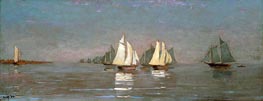
Gloucester, Mackerel Fleet at Dawn 1884
Oil Painting
$790
$790
Canvas Print
$62.11
$62.11
SKU: HOM-5572
Winslow Homer
Original Size: 39.7 x 95.9 cm
Boston Museum of Fine Arts, Massachusetts, USA
Winslow Homer
Original Size: 39.7 x 95.9 cm
Boston Museum of Fine Arts, Massachusetts, USA

Gloucester, Mackerel Fleet at Sunset 1884
Oil Painting
$781
$781
Canvas Print
$62.11
$62.11
SKU: HOM-5573
Winslow Homer
Original Size: 39.7 x 95.9 cm
Boston Museum of Fine Arts, Massachusetts, USA
Winslow Homer
Original Size: 39.7 x 95.9 cm
Boston Museum of Fine Arts, Massachusetts, USA
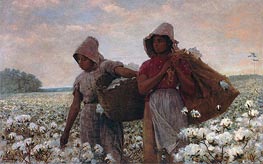
The Cotton Pickers 1876
Oil Painting
$1483
$1483
Canvas Print
$62.11
$62.11
SKU: HOM-5574
Winslow Homer
Original Size: 61 x 96.8 cm
Los Angeles County Museum of Art, California, USA
Winslow Homer
Original Size: 61 x 96.8 cm
Los Angeles County Museum of Art, California, USA

The Four-Leaf Clover 1873
Oil Painting
$1168
$1168
SKU: HOM-5575
Winslow Homer
Original Size: unknown
Detroit Institute of Arts, Michigan, USA
Winslow Homer
Original Size: unknown
Detroit Institute of Arts, Michigan, USA

The Dinner Horn 1873
Oil Painting
$855
$855
Canvas Print
$62.11
$62.11
SKU: HOM-5576
Winslow Homer
Original Size: 30.2 x 36.2 cm
Detroit Institute of Arts, Michigan, USA
Winslow Homer
Original Size: 30.2 x 36.2 cm
Detroit Institute of Arts, Michigan, USA

Rocky Coast and Gulls 1869
Oil Painting
$769
$769
Canvas Print
$62.11
$62.11
SKU: HOM-5577
Winslow Homer
Original Size: 41.3 x 71.5 cm
Boston Museum of Fine Arts, Massachusetts, USA
Winslow Homer
Original Size: 41.3 x 71.5 cm
Boston Museum of Fine Arts, Massachusetts, USA
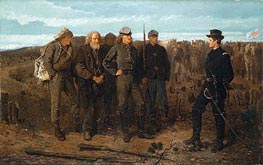
Prisoners from the Front 1866
Oil Painting
$1492
$1492
Canvas Print
$62.11
$62.11
SKU: HOM-5578
Winslow Homer
Original Size: 61 x 96.5 cm
Metropolitan Museum of Art, New York, USA
Winslow Homer
Original Size: 61 x 96.5 cm
Metropolitan Museum of Art, New York, USA
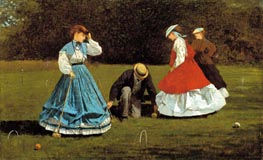
Croquet Scene 1866
Oil Painting
$987
$987
Canvas Print
$62.11
$62.11
SKU: HOM-5579
Winslow Homer
Original Size: 40.3 x 66.2 cm
Art Institute of Chicago, Illinois, USA
Winslow Homer
Original Size: 40.3 x 66.2 cm
Art Institute of Chicago, Illinois, USA
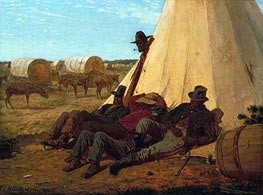
The Bright Side 1865
Oil Painting
$1061
$1061
Canvas Print
$62.11
$62.11
SKU: HOM-5580
Winslow Homer
Original Size: 32.4 x 43.2 cm
Fine Arts Museums of San Francisco, California, USA
Winslow Homer
Original Size: 32.4 x 43.2 cm
Fine Arts Museums of San Francisco, California, USA
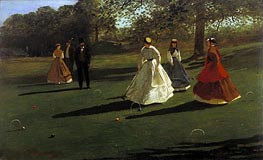
Croquet Players 1865
Oil Painting
$1313
$1313
Canvas Print
$62.11
$62.11
SKU: HOM-5581
Winslow Homer
Original Size: 40.6 x 66 cm
Albright-Knox Art Gallery, Buffalo, USA
Winslow Homer
Original Size: 40.6 x 66 cm
Albright-Knox Art Gallery, Buffalo, USA
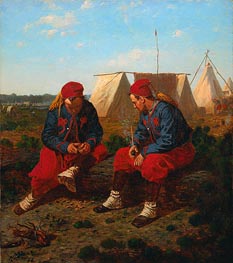
The Briarwood Pipe 1864
Oil Painting
$1128
$1128
Canvas Print
$62.11
$62.11
SKU: HOM-5582
Winslow Homer
Original Size: 42.8 x 37.5 cm
Cleveland Museum of Art, Ohio, USA
Winslow Homer
Original Size: 42.8 x 37.5 cm
Cleveland Museum of Art, Ohio, USA

Playing Old Soldier 1863
Oil Painting
$1356
$1356
SKU: HOM-5583
Winslow Homer
Original Size: 40.6 x 30.5 cm
Boston Museum of Fine Arts, Massachusetts, USA
Winslow Homer
Original Size: 40.6 x 30.5 cm
Boston Museum of Fine Arts, Massachusetts, USA
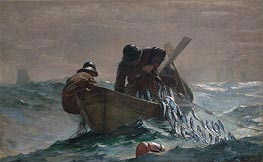
The Herring Net 1885
Oil Painting
$1079
$1079
Canvas Print
$62.11
$62.11
SKU: HOM-8307
Winslow Homer
Original Size: 76.5 x 123 cm
Art Institute of Chicago, Illinois, USA
Winslow Homer
Original Size: 76.5 x 123 cm
Art Institute of Chicago, Illinois, USA
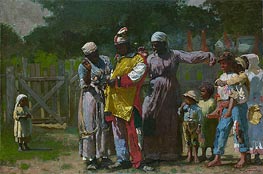
Dressing for the Carnival 1877
Oil Painting
$1254
$1254
Canvas Print
$62.13
$62.13
SKU: HOM-15732
Winslow Homer
Original Size: 50.8 x 76.2 cm
Metropolitan Museum of Art, New York, USA
Winslow Homer
Original Size: 50.8 x 76.2 cm
Metropolitan Museum of Art, New York, USA
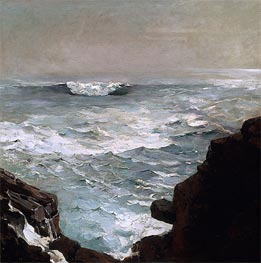
Cannon Rock 1895
Oil Painting
$1102
$1102
Canvas Print
$93.27
$93.27
SKU: HOM-15733
Winslow Homer
Original Size: 101.6 x 101.6 cm
Metropolitan Museum of Art, New York, USA
Winslow Homer
Original Size: 101.6 x 101.6 cm
Metropolitan Museum of Art, New York, USA
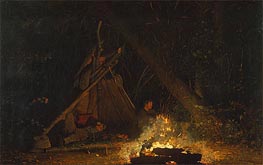
Camp Fire 1880
Oil Painting
$1087
$1087
Canvas Print
$62.11
$62.11
SKU: HOM-15734
Winslow Homer
Original Size: 60.3 x 96.8 cm
Metropolitan Museum of Art, New York, USA
Winslow Homer
Original Size: 60.3 x 96.8 cm
Metropolitan Museum of Art, New York, USA

Eagle Head, Manchester, Massachusetts (High Tide) 1870
Oil Painting
$1196
$1196
Canvas Print
$63.32
$63.32
SKU: HOM-15735
Winslow Homer
Original Size: 66 x 96.5 cm
Metropolitan Museum of Art, New York, USA
Winslow Homer
Original Size: 66 x 96.5 cm
Metropolitan Museum of Art, New York, USA